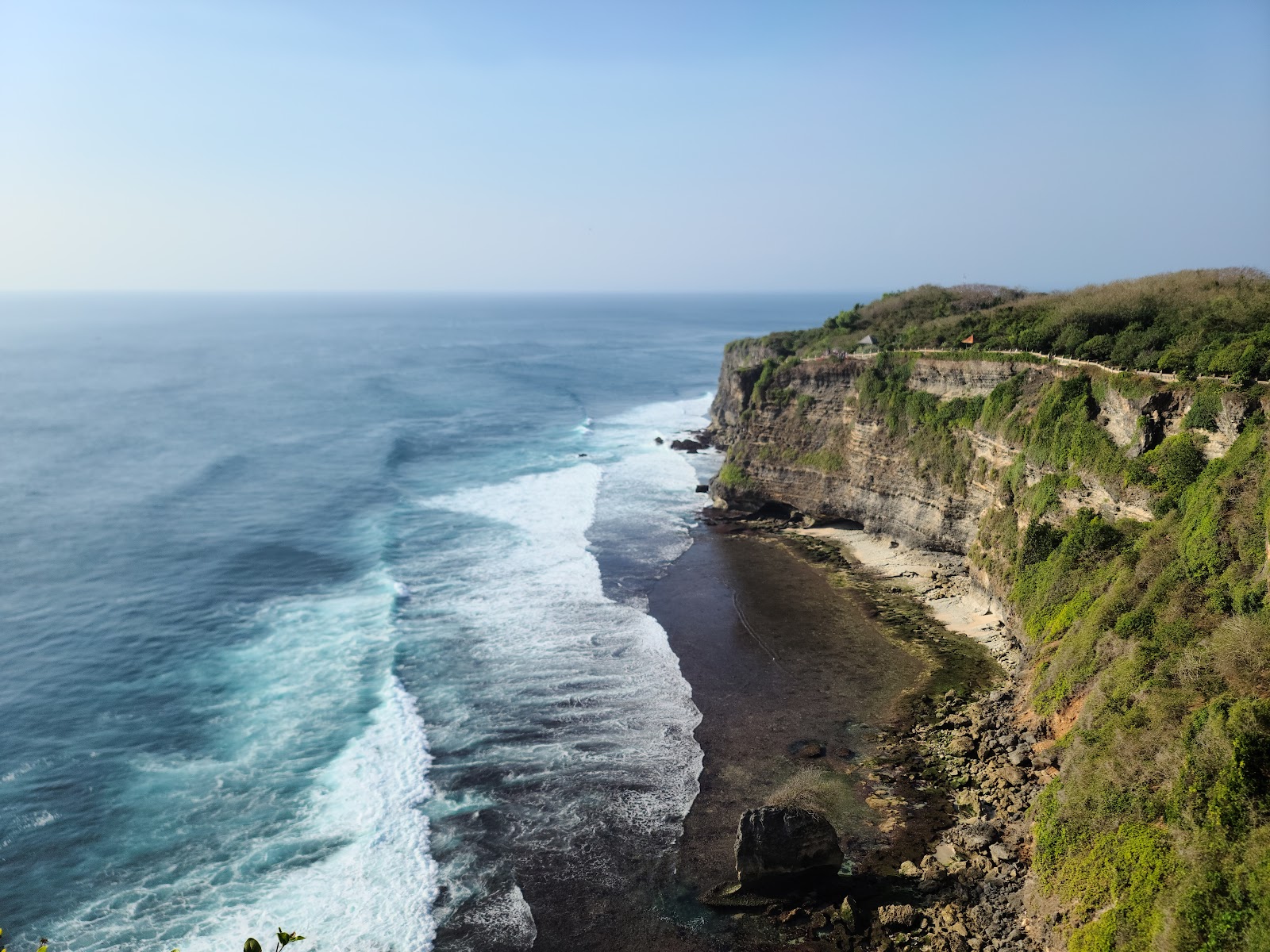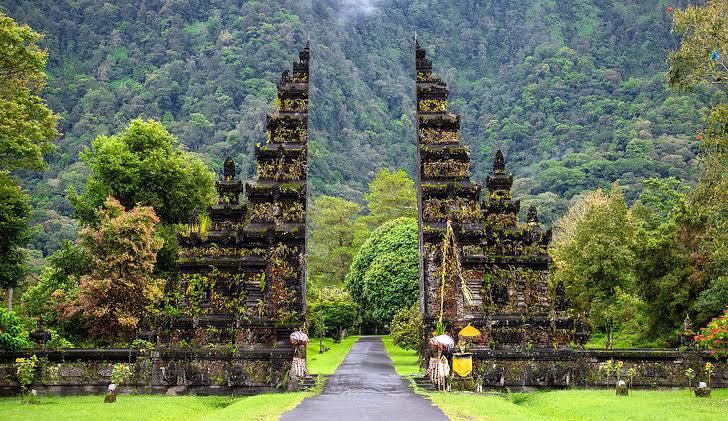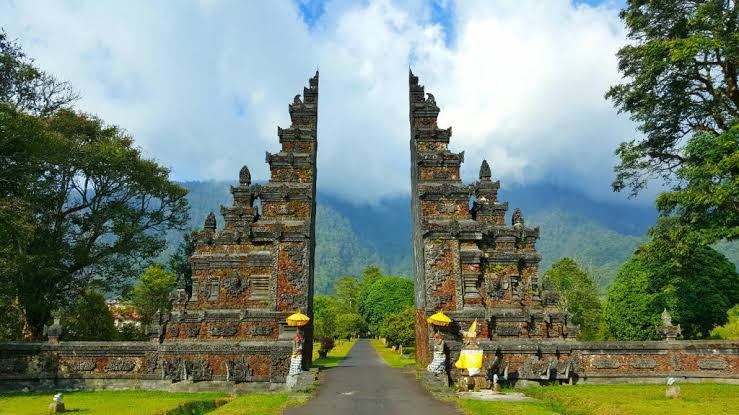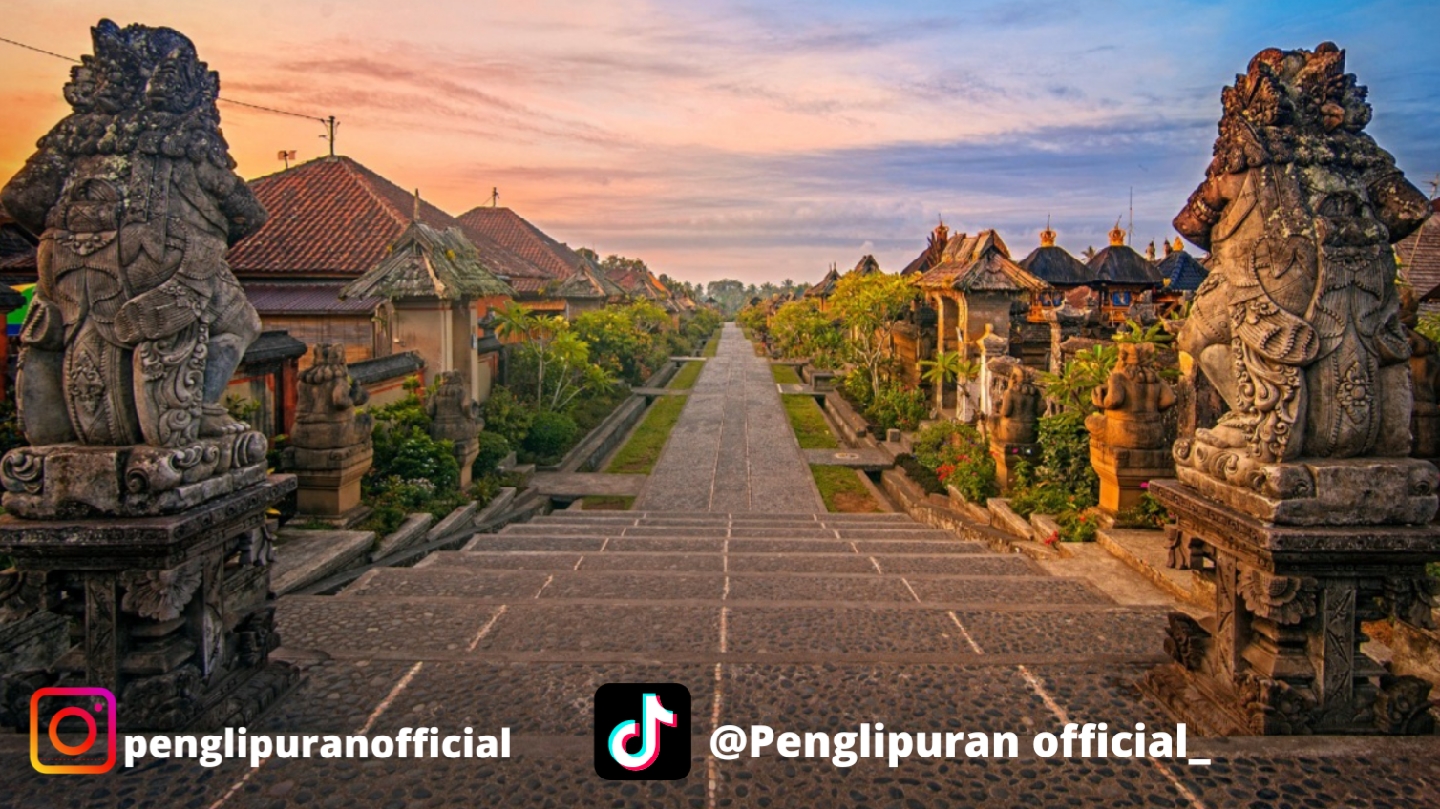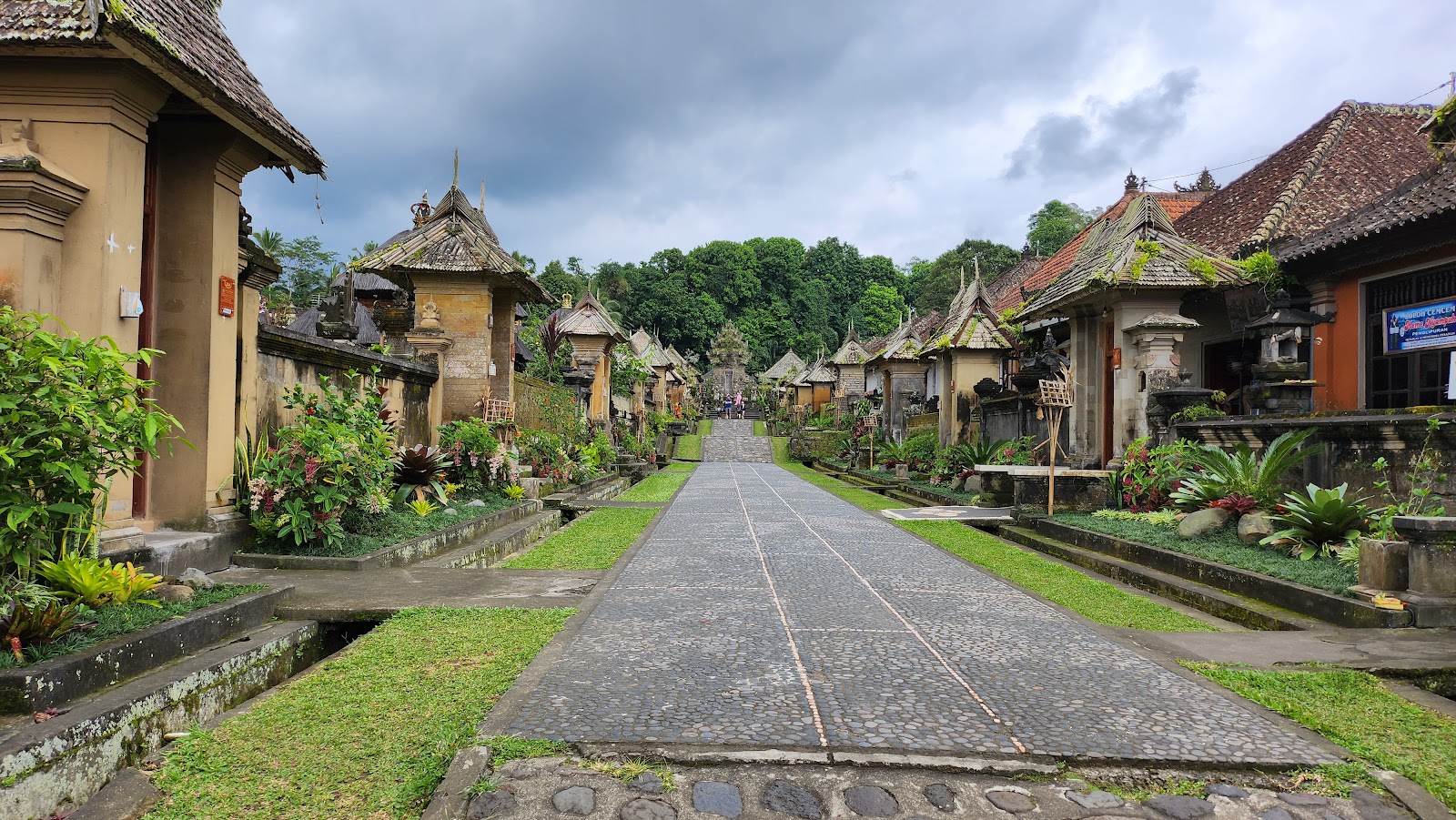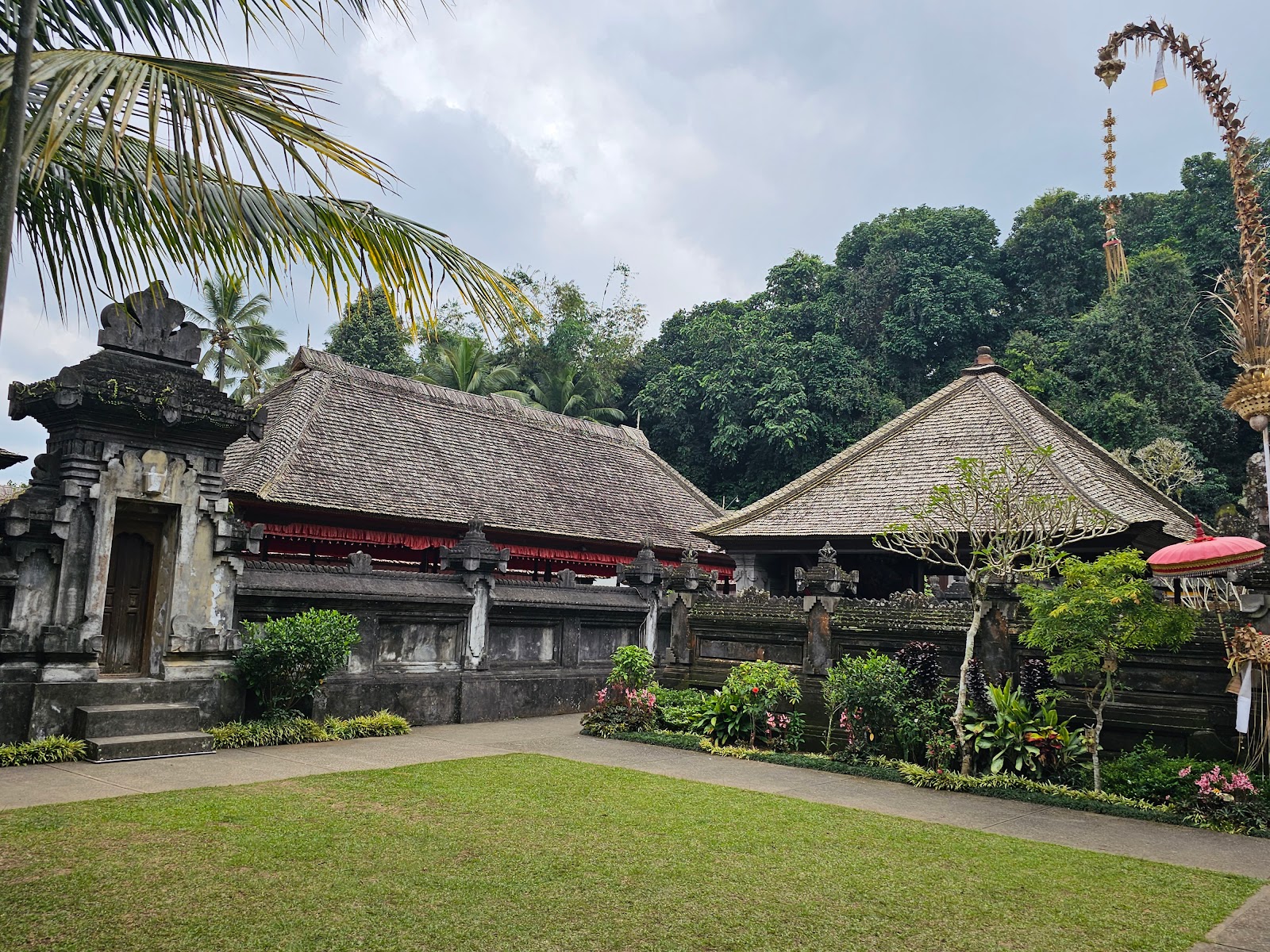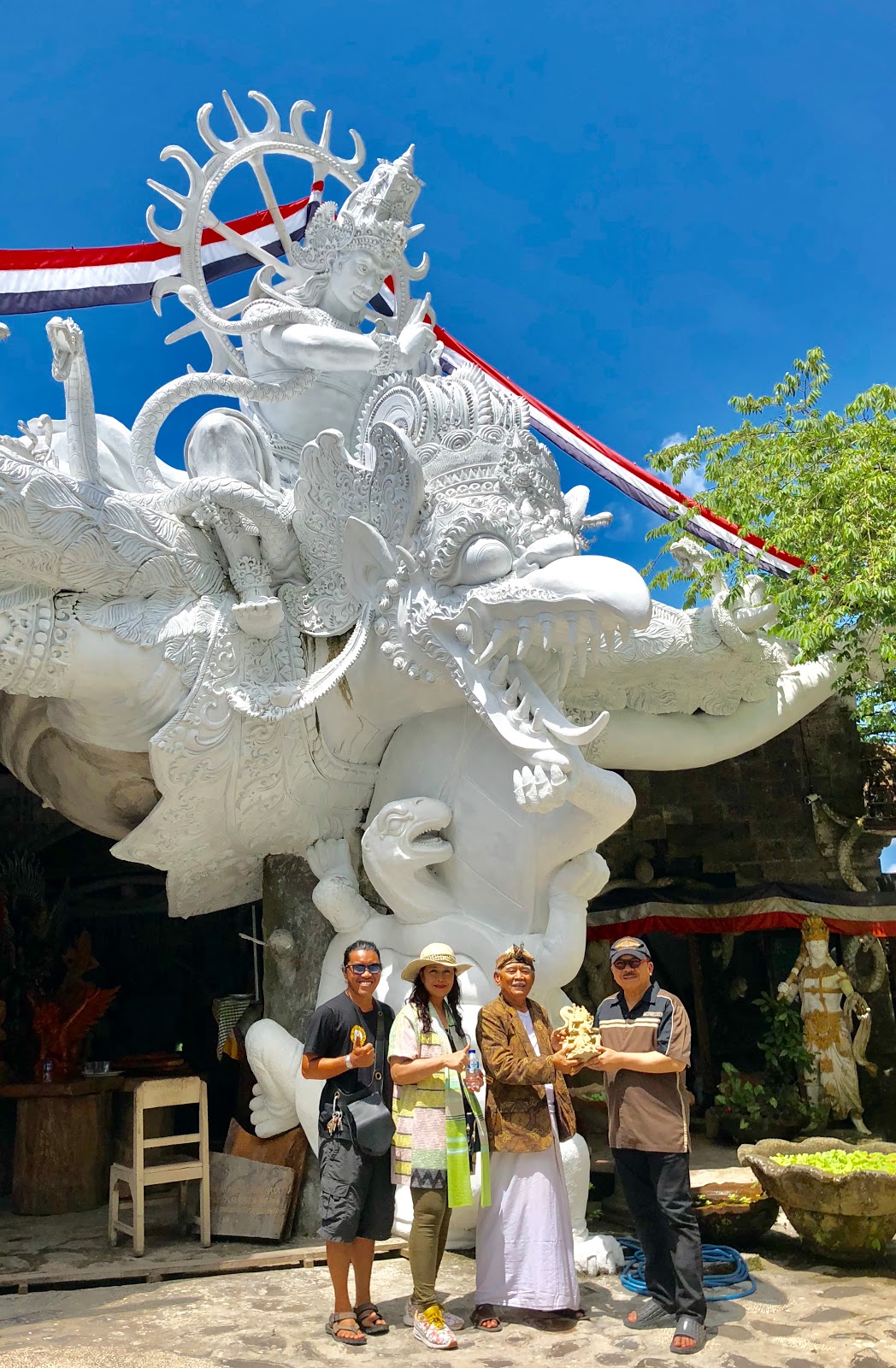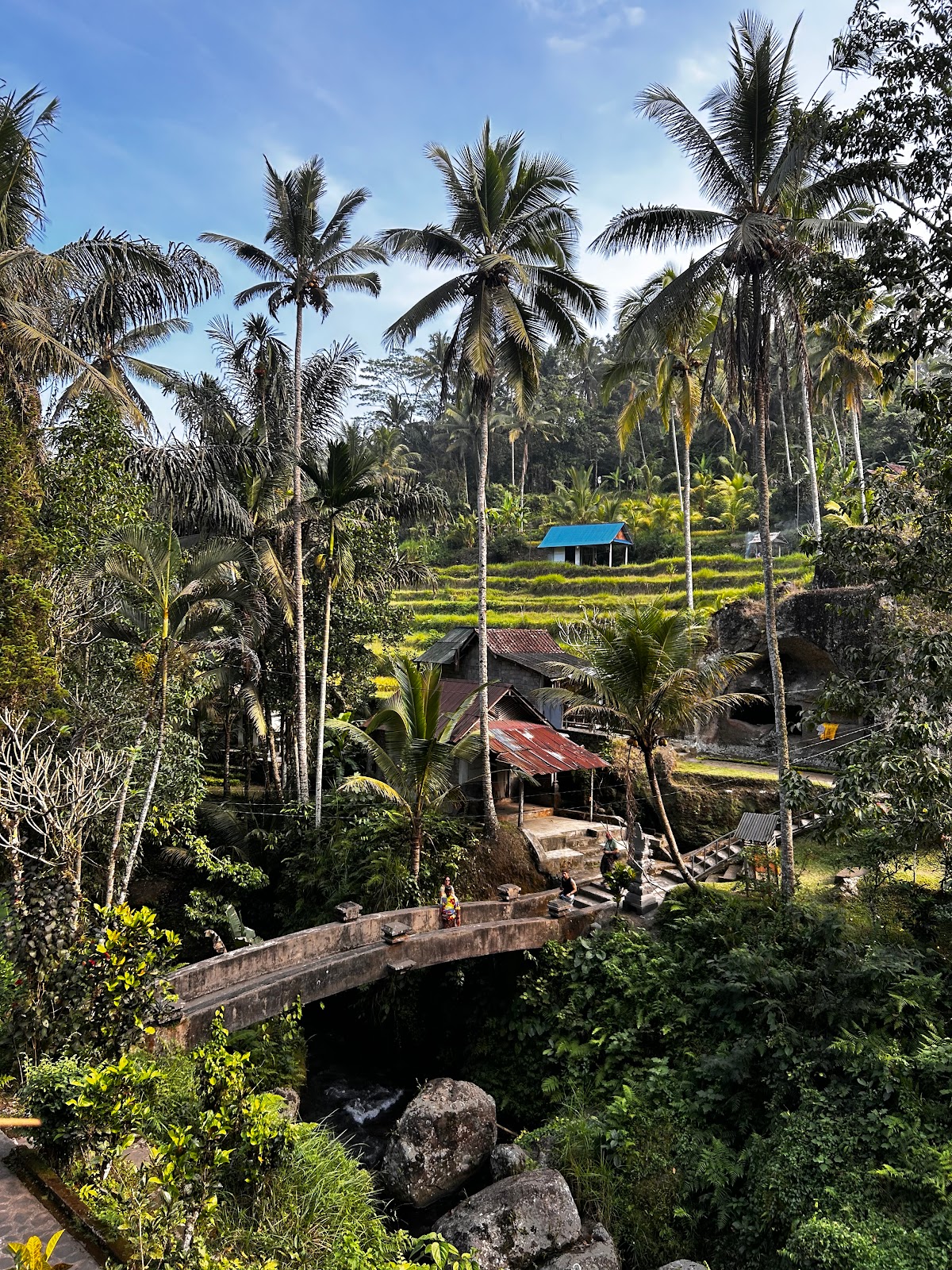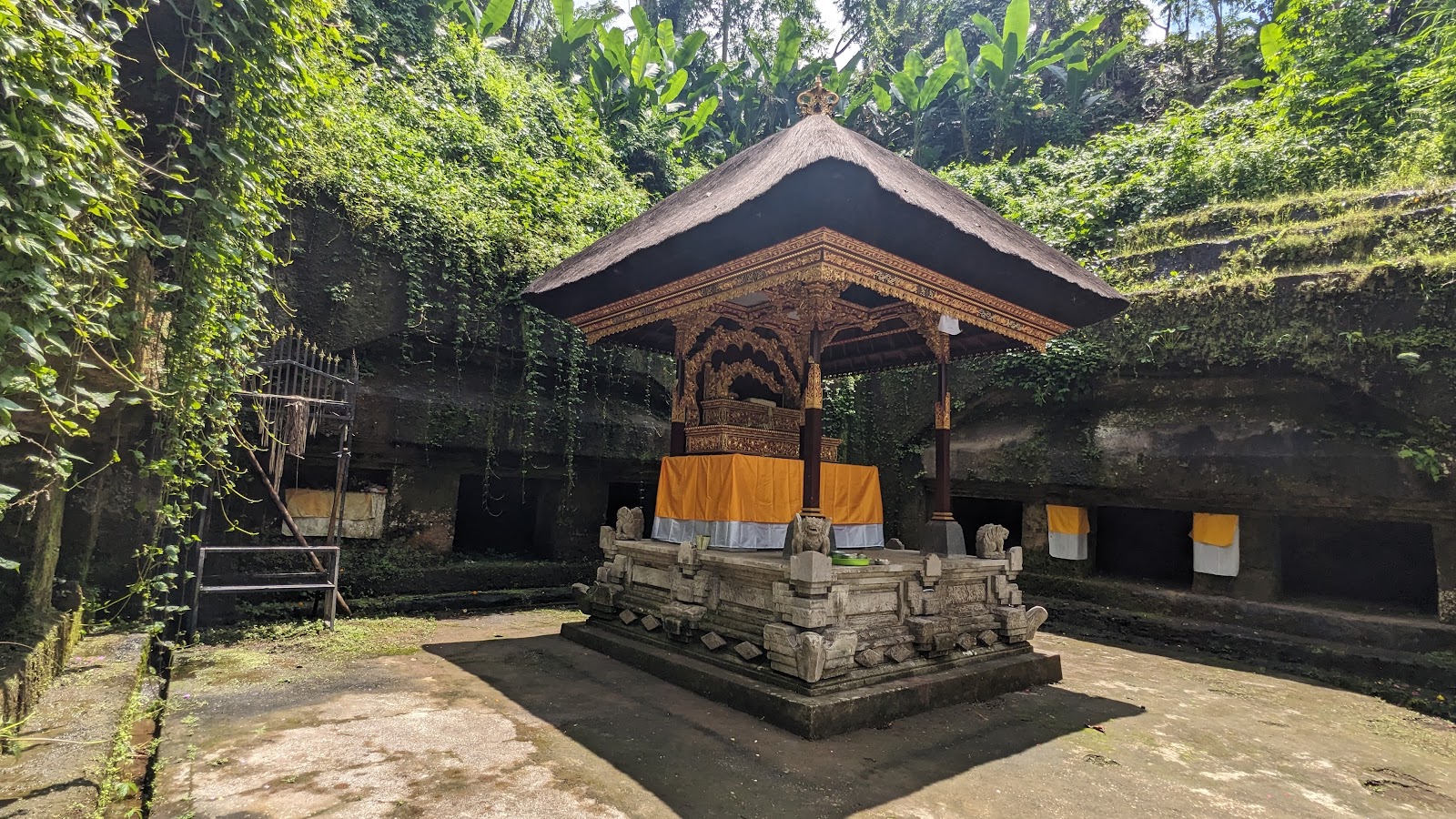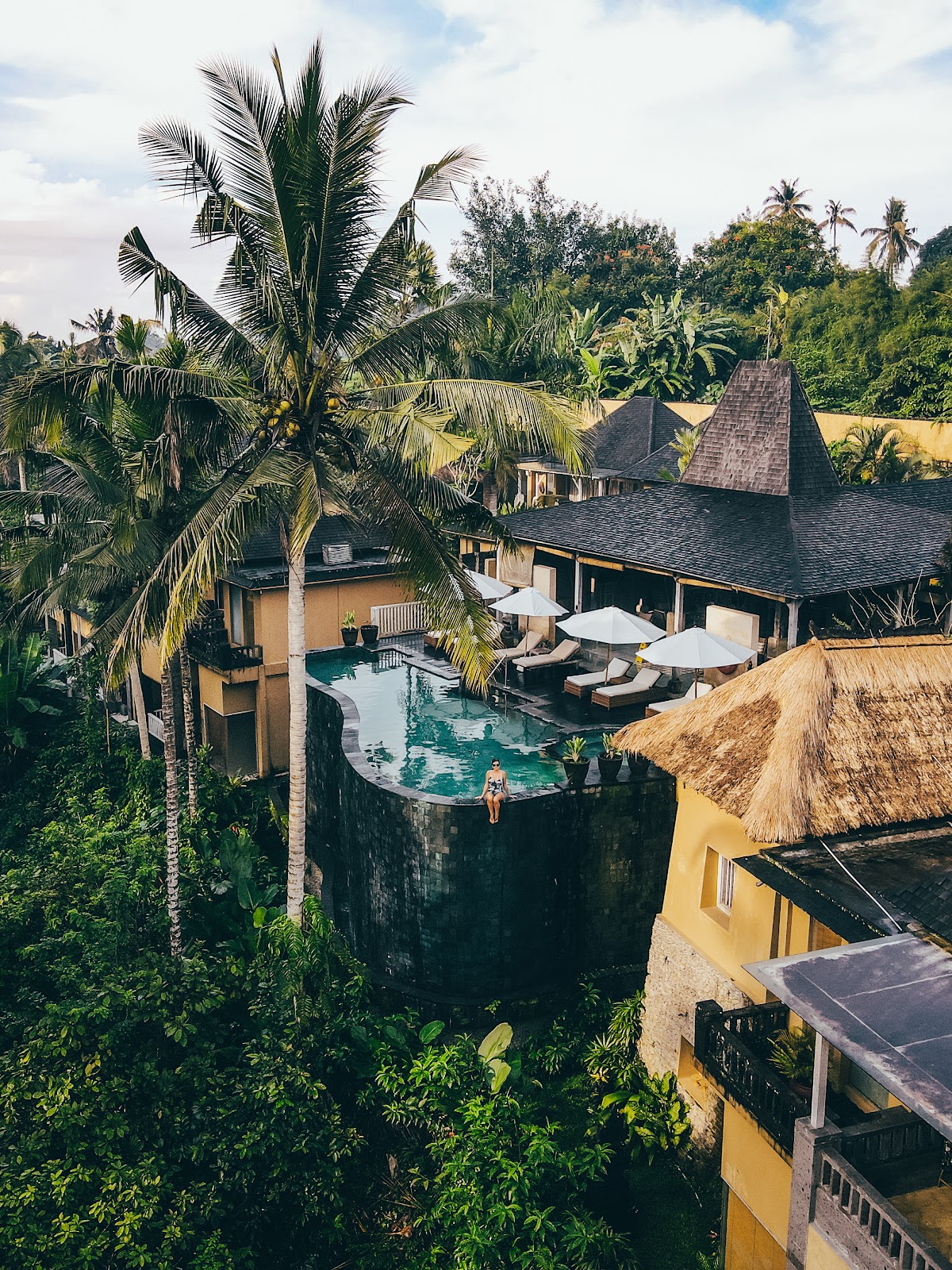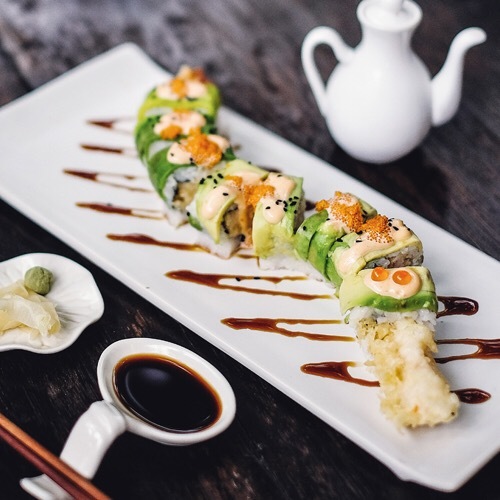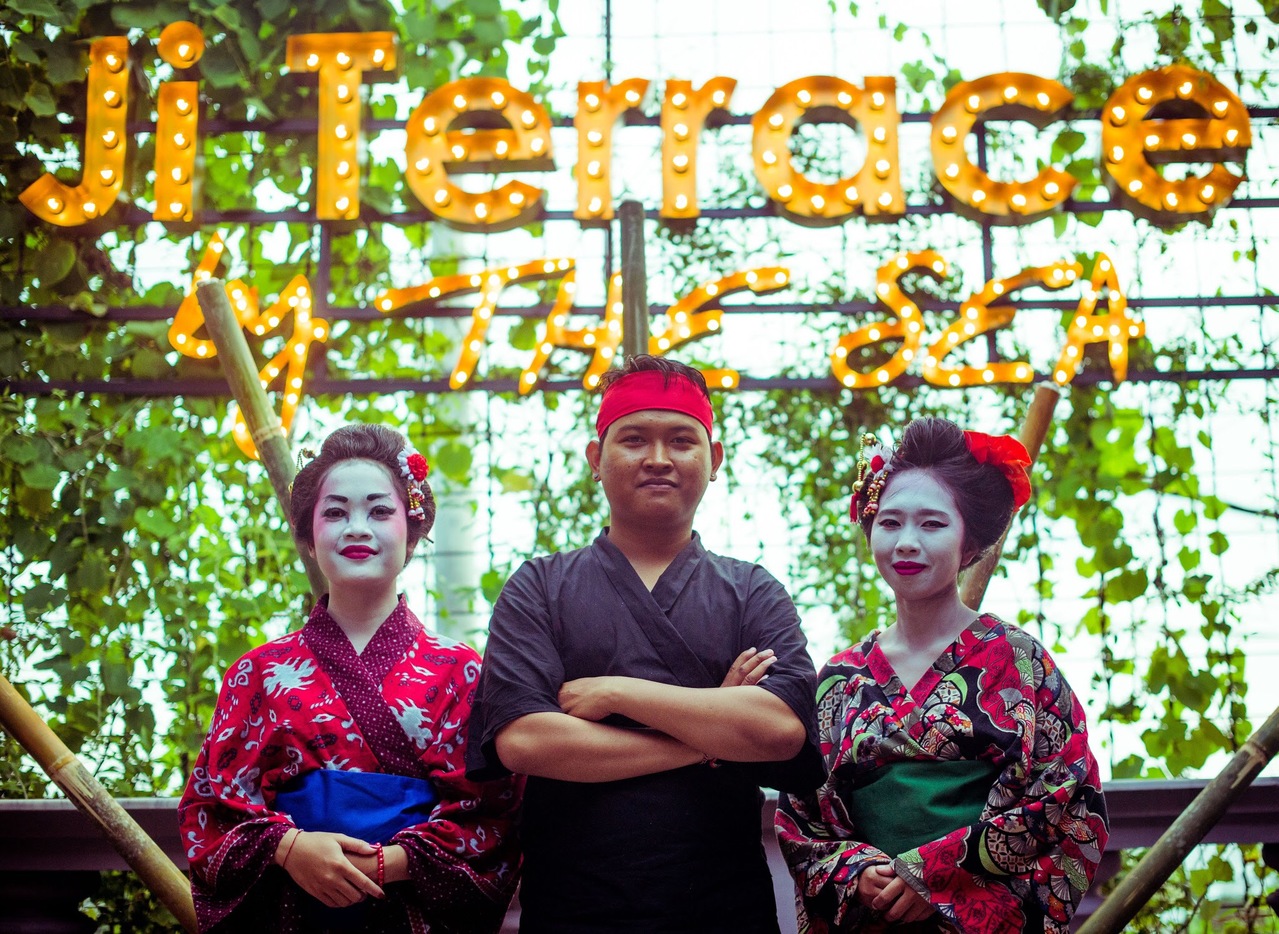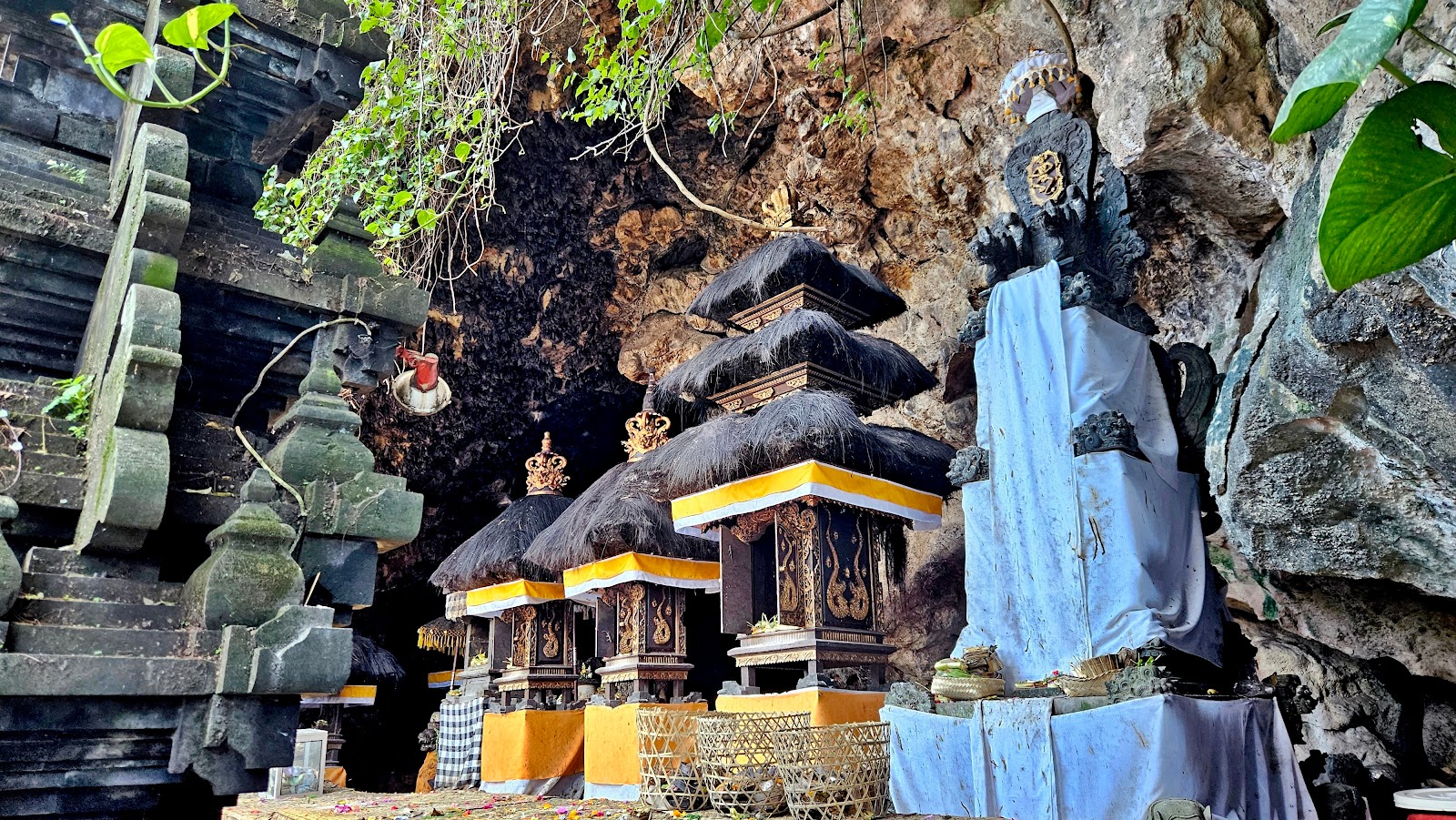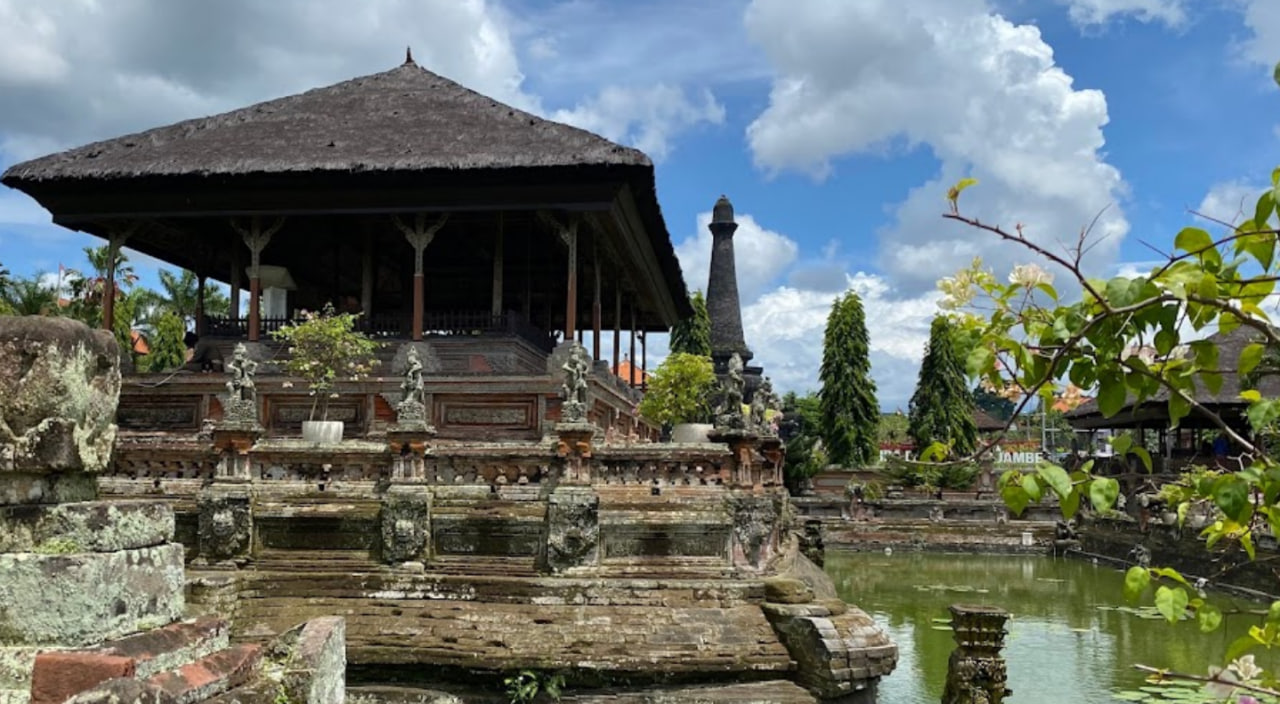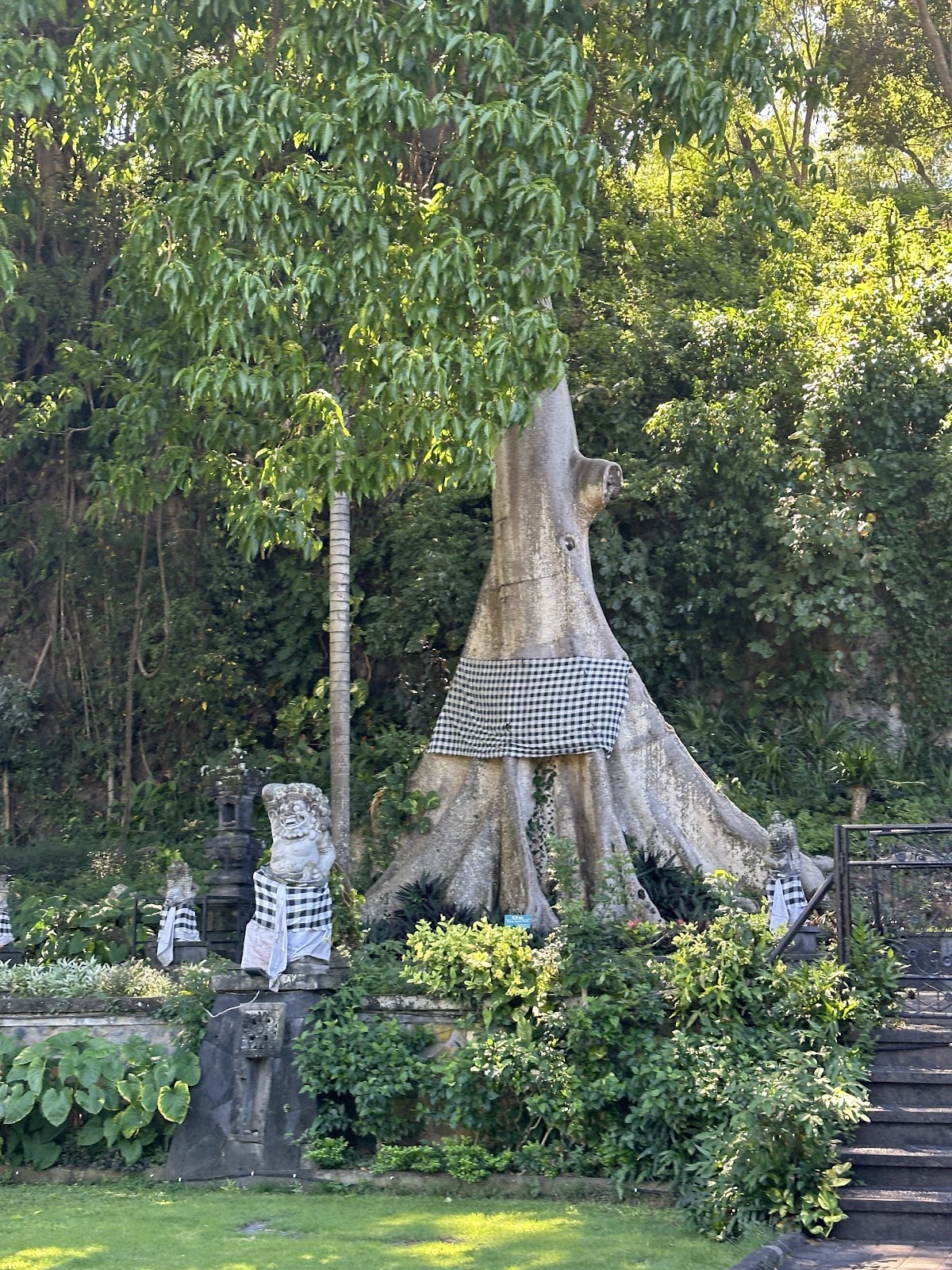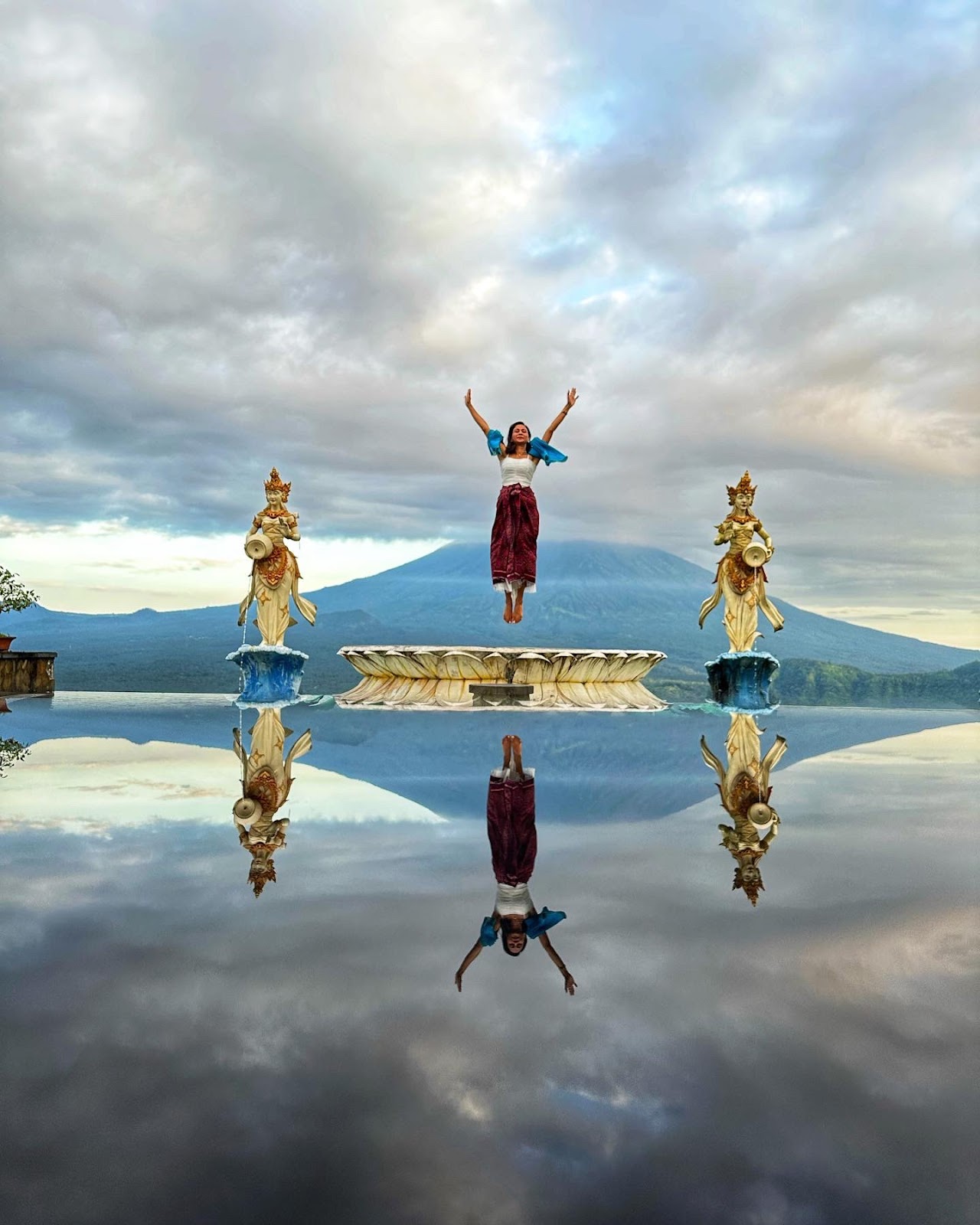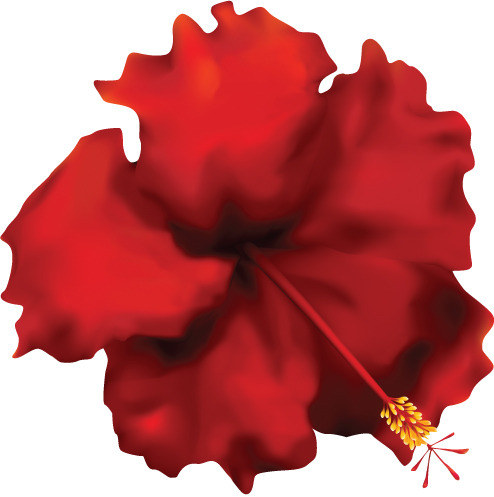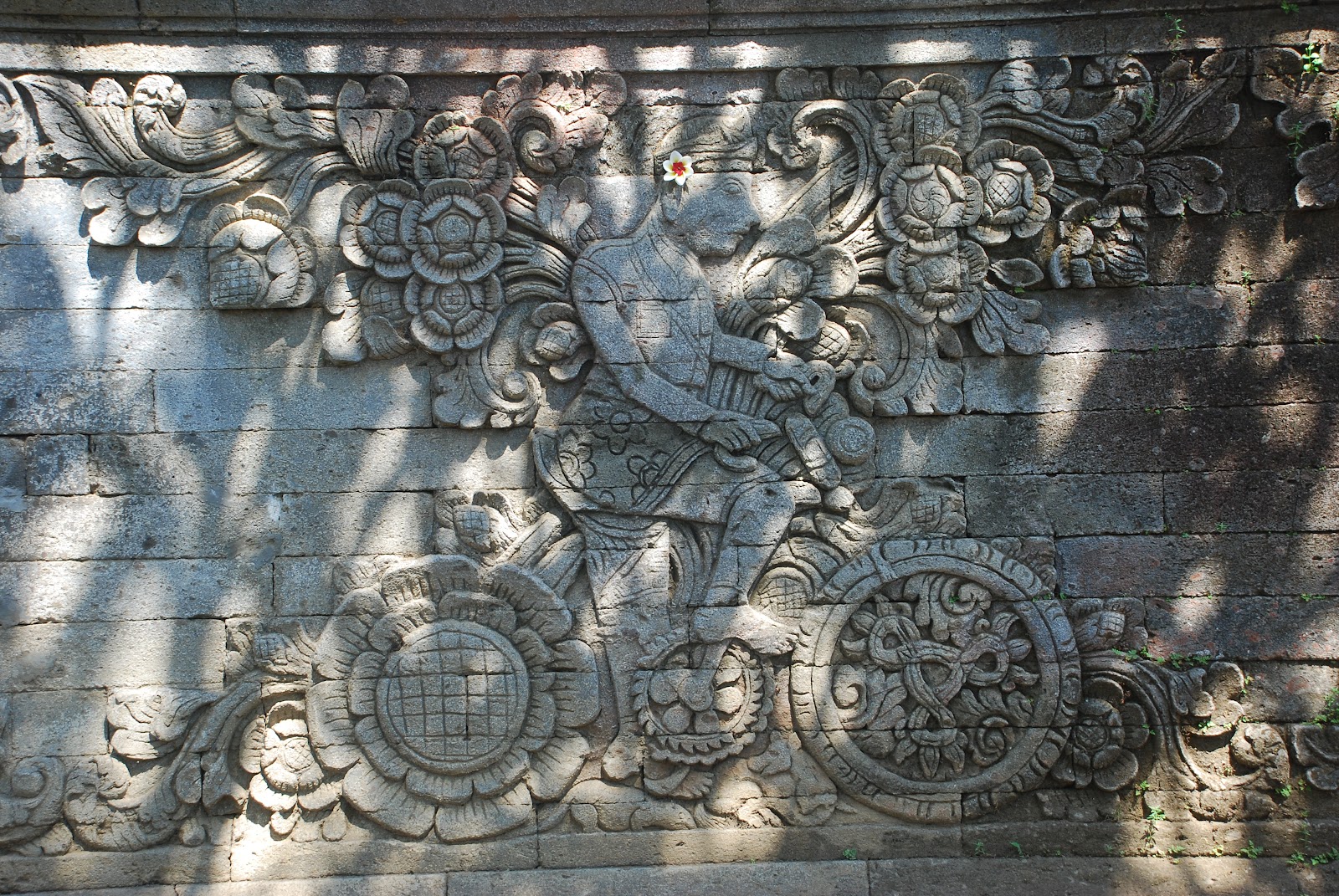The famous Batuan Temple is officially called Pura Puseh Desa Adat Batuan. This means it serves as a temple facing Mount Agung (Pura Puseh) in the traditional village (desa adat) of Batuan. It is located about 10 kilometers from Ubud, making it a convenient stop if you're traveling to Ubud from the touristy south of Bali or vice versa. The village of Batuan is well known on the island for its cultural contributions as one of the centers of art. There is even a unique Batuan style of Balinese painting.
The temple complex covers an area of 0.65 hectares and is distinguished by its intricate and well-preserved stone carvings. This complex was founded in the 11th century AD, specifically between 1020 and 1022. Some local historians claim that Pura Puseh Desa Adat Batuan is the oldest Balinese temple. The name comes from the Indonesian word 'batu,' meaning 'stone.'
Researchers suggest that this name might be related to the megalithic tradition where stones were placed vertically to denote meeting places or rituals related to ancestor worship. Like any other Balinese temple, it consists of an outer courtyard - Nista Mandala, a middle courtyard - Madya Mandala, and the inner, most sacred courtyard - Utama Mandala. At the entrance, there is a spacious area with parking and a traditional large Balinese pavilion called wantilan. This pavilion is usually used for meetings, dance lessons, and performances of traditional Balinese dances. Representatives of the temple typically sit there to lend visitors kamben or sarongs, which must be worn to visit the sanctuary. Generally, tourists pay a voluntary donation to enter the temple.
Passing through the multi-tiered split gates into the temple, you will see figures of Balinese mythical creatures and natural ornaments, as well as images of the triad of major Hindu gods - Brahma, Vishnu, and Shiva.
In the first courtyard, there is a pleasant garden with statues of Balinese deities. There is also a long building called Bali Agung or Bale KulKul, where the ceremonial bell is located. The courtyard is paved with patterned tiles alternating with rows of neatly trimmed grass.
The next courtyard is also accessed through richly decorated gates with figures of fierce guards. However, for visitors, there are two additional entrances on the left and right, while the main carved gates open only on major holidays. The multi-tiered shrines with thatched roofs in the next courtyard are typical for all large temple complexes in Bali. They symbolize the sacred Mount Meru from Hindu myths. Here you will also find the Padmasana altar, which is used for worshiping the supreme Balinese god, Sang Hyang Widhi Wasa.
In the temple grounds, there is a small pond with a huge statue of a turtle swimming in the water, seemingly carrying two Balinese altars on its back.
Tourists are not allowed to enter the most sacred inner courtyard. Only worshippers with offerings can enter. It is best to visit the temple during the holidays when it is filled with Balinese people in ceremonial attire with elaborate offerings of fruits and flowers. If you can't catch a temple festival, the piodalan day, try to time your visit for a barong dance performance, which is held here from time to time. The temple is very popular among tourists, and many buses with groups stop here during the day. To enter the temple, a voluntary donation is sufficient.









